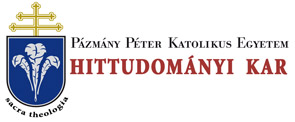Folia Theologica et Canonica 6. 28/20 (2017)
IUS CANONICUM - José Miguel Viejo-Ximénez, Raymond of Penyafort decretalist
146 JOSE MIGUEL VIEJO-XIMENEZ 390310‘. Did the revision of the glossa ordinaria by Bartolome de Brescia c. 1234-1241 echo Raymond’s glosses? (ii) Glosses to the Compilatio antiqua quarta. Who hides behind the “r.” glosses to Johannes Tuetonicus' collection in Admont, Stiftsbibliothek, 22, fol. 246v-270v? To assign them to one of the “r.” masters active in Bologna in the first two decades of the XII century, Raymond of Penyafort’s authentic writings could serve as a starting point, without forgetting the contemporary news known by other sources, as well as the teachings attributed to “Raymundus” by the decretalists in the later centuries'02. If the the young Catalan were finally the author, Raymond would have followed the steps of Jacobo de Albegna (Jacobus Albanus), Petrus Hispanus Portugalensis or Martinus Zamorensis, whose academic activity in Bologna was not conditioned by the attitude of Innocent III towards the Compilatio quarta. (iii) Summa Iuris Canonici. In the first two decades of the 12th century, distancing from the Compilationes antiquae and conceiving an original system to explain the ius novum canonicum, in dialogue with the DG, was an audacious innovation. In Bologna, the decretalists kept being attached to the titles (and the letter) of the collections. Although Raymond did not complete the work, the index and the two particulae of the SIC reveal a brilliant ability to anlyse and synthesise. The transcription of the manuscript Bamberg, Staatsbibliothek, Canon. 19 (P.11.6), fol. 258ra-vb published on 1975 could be taken as basis to make an edition of the SIC that meets the demands of the historical-critical method101 102 103. This editing work would also serve to establish the relationships of the SIC with the summae titulorum of Bemard of Pavia, Ambrosius and other Bolognese decretalists. The influence of Raymond of Penyafort grew progressively since his departure from Bologna. In Barcelona and Rome the decretalist was highly regarded. He acquired a prestige that exceeds any classification attempt. Collaborator of popes, kings and ecclesiastics, writer, counsellor and promoter of pastoral missions, his extra academic activity had a political and pastoral dimension. Very soon, however, the works of the decretalist took his author back to the classroom. In 1234 Gregory IX sent the Liber Extra to the Universities of Bologna 101 Cf. Weigand, R„ Die Glossen, 893. 102 Cf. García y García, A., Valor y proyección, 247 and footnote 43. 103 Remarks made by Kuttner ("On the method”, cit.) and García y García {La canonistica ibèrica, cit.) are still valid. The new edition should follow the guidelines of the Stephan Kuttner Institute of Medieval Canon Law: Some methodological considerations, Traditio 11 (1955) 435-439. Notes for contributors, in Traditio 12 (1956) 623-626. Notes on the presentation of text and apparatus in editing works of the decretists and decretalists, in Traditio 15(1959) 452- 464. Cf. Larrainzar, C., Métodos para la edición de fuentes canânicas manuscritas y moder- nas, in Revista Espahola de Derecho Canònico 69 (2012) 631-684.
